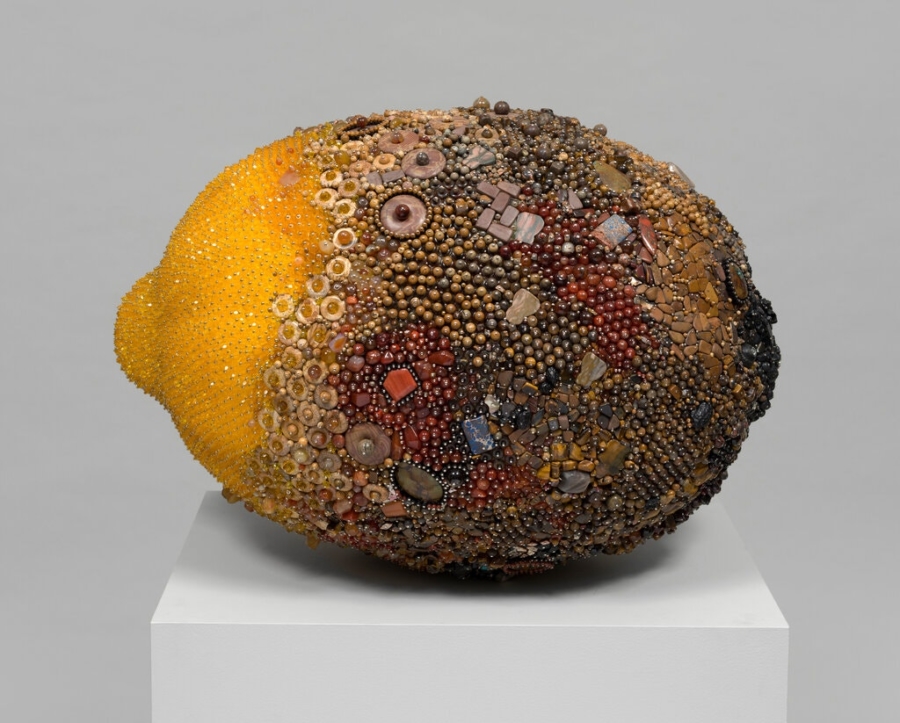June 2, 2021
Download as PDF
View on The New York Times

Kathleen Ryan’s “Bad Lemon (Armadillo),” from 2021, at Karma. Credit…Kathleen Ryan and Karma
Good art is wondrous stuff that I can’t imagine living without. But I have to admit that, for all its glory, there’s something inescapably rotten about it. With so many people struggling for the basics of life, deluxe objects that end up appealing to the rich, and belonging to them, can make you hold your nose.
I’ve rarely seen work that speaks to the magic and rot of art as perfectly as the Brobdingnagian sculptures of the New Yorker Kathleen Ryan, on view in a show called “Bad Fruit” that fills both Karma spaces in the East Village.
Ryan presents cherries the size of bowling balls, gleaming and glossy wherever they’re not covered in mold. She displays lemons as big as a beer keg that are sparkling-fresh on one side, green and fuzzy on the other. A jack-o’-lantern that would fill most NYCHA bedrooms evokes a sight from the days after Halloween: outside, a smooth orange skin; inside, a mass of decaying squash-flesh. And Ryan has rendered all this blown-up produce, in its health and putrescence, entirely in beads of different sizes, colors and materials. The effect is almost trompe l’oeil. The healthy parts of a lemon are captured in subtle gradations of yellow, orange and amber, brilliantly realized in glass and acrylic; where the fruit has gone moldy, a chaotic mass of greens, whites, grays and browns is reproduced using beads made of such semiprecious stones as malachite, smoky quartz, citrine and serpentine. The more putrefied the flesh of Ryan’s produce, the more precious the materials it gets made from and the more irresistible it is to the eye, like something Fabergé might have made for a prince.
Irresistible rot for the oligarchy? In 2021, Ryan’s trompe l’oeil might just yield a vision of art.


